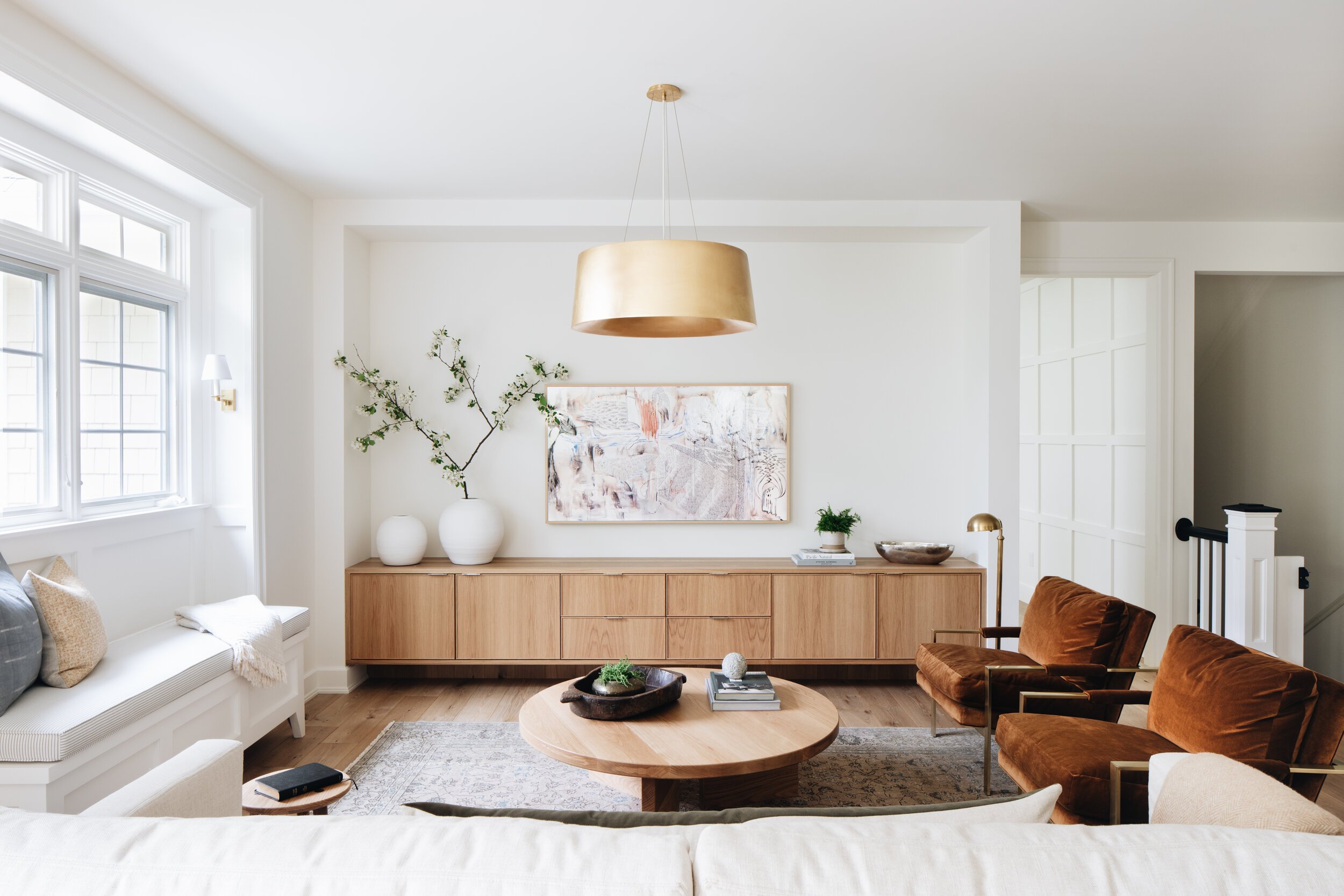Decorating a room can be daunting, especially if you’re starting from scratch. With so many options to choose from, it can be challenging to know where to begin. That’s why we’ve put together a list of our go-to’s for getting started and design a functional home.
Start With The Floorplan & Layout
When approaching a new room design, starting with the foundation: the layout or floorplan is essential. Begin by getting comfortable with the space and understanding the desired flow and functionality. Take all your dimensions and determine if the furniture you’re considering will fit. This will help you narrow down your selection and make the process a little more natural.
For example, if you’re designing a living room, start by determining where the TV or entertainment center will go and then arrange your seating around it. Also, consider the traffic flow in the room. Avoid placing furniture in high-traffic areas, and create clear pathways that make it easy to move around.
Build from the Ground Up
After determining the layout and functionality of the space, consider your floors as your fifth wall. They require just as much care and attention as a wall you’re decorating would need. Having a solid foundation to build up around will make the redecorating process much more manageable.
If you’re unsure of what you want, pick your rug first. The rug can define the space and help you hone in on the look, feel, and color palette for the room. Remember, floors reflect light in different ways, so consider the mood you want to create in the space.
For example, a light-colored rug can make a small room feel larger, while a darker rug can make a larger room feel cozier. Also, consider the material of the rug. A natural fiber rug like jute or sisal can add texture and warmth to a room, while a wool or silk rug can add luxury and elegance.
Designed by Atelier Roux
Focus on the Biggest Pieces
Once you’ve established the layout and flooring, focus on the biggest pieces in the room. This includes your sofa, chairs, and other large furniture items. Deciding on the one piece you’ve been dreaming about- a green velvet sofa, a fluffy sectional, or a cascading chandelier- will help you build around it, selecting pieces that complement the larger elements in the room.
Consider the style, color, and material when selecting large furniture pieces. For example, a leather sofa can add a classic and timeless feel to a room, while a fabric sofa can add softness and warmth. Also, consider the durability and functionality of the furniture, especially if you have children or pets.
Take a Step Back
Before selecting any furnishings or decor, take a step back and evaluate the overall flow and balance of the room. Consider the structural elements of the space, such as the size and placement of windows and doors, and how they affect the overall look and feel of the room. If something feels off or unbalanced, don’t be afraid to make structural changes, such as resizing a window or adding a partition wall, to create a more harmonious space. Remember, each development in the room is a process and may take some time to achieve the right flow and balance you seek.
Designed by Atelier Roux
Starting with these foundational elements will set you on your way to creating a functional and beautiful space. Decorating a room can feel overwhelming, but it doesn’t have to be. By taking a structured approach and focusing on the basics of layout, flooring, and larger pieces, you can set yourself up for success. Remember, decorating a room is a process that requires patience, time, and attention to detail.
Ready for the Next Step?
If you need additional guidance, don’t hesitate to seek the help of a professional. Atelier Roux is always here to offer advice and support, and we’d be happy to chat with you about your project goals. Feel free to contact us to schedule a complimentary consultation or discuss your design ideas. We love helping our clients achieve their vision and create functional and beautiful spaces.
Atelier Roux is a full-service design firm run by Manon Roux. We’re dedicated to crafting bespoke interiors that harmonize with the rhythm of our clients’ lives, seamlessly merging sophistication with purpose in every narrative we create.
Interested in working together? Fill out an inquiry form here and let’s talk about how we can help!





